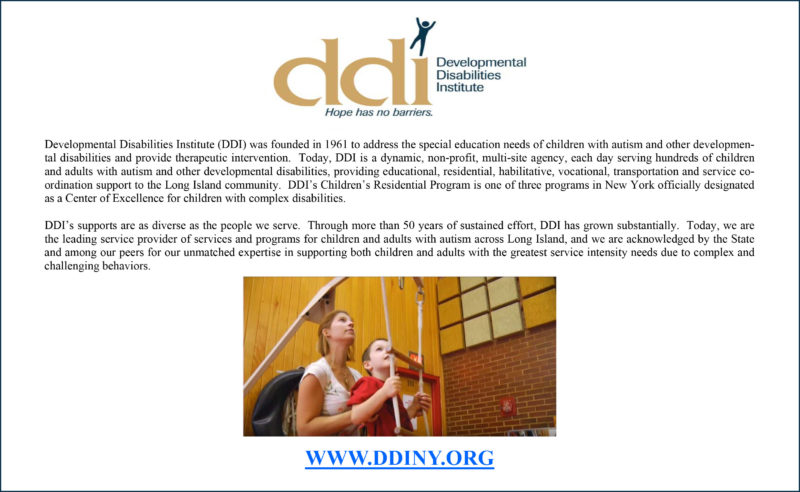Despite the existence of severe and challenging behavioral presentations for many children with autism spectrum disorders living in residential and inpatient settings, children with complex ASD continue to be underrepresented in the literature (Siegel, et al. 2015) and there is a marked lack of research literature to help residential and psychiatric inpatient staff identify which behaviors may be definitively associated with a possible co-occurring psychiatric comorbidities or mental health diagnosis such as ADHD, anxiety, phobia, depression, and more.

Bianca Marro, MA

Rebecca Girard, MSW, LCSW
Some studies suggest a high rate of psychiatric comorbidities such as Anxiety Disorders, Oppositional Defiant Disorder, Attention Deficit Disorder, and Mood Disorders in children diagnosed with ASD (Orinstein et al. 2015, Joshi et al. 2010; Simonoff et al. 2008; de Bruin et al. 2007; Leyfer et al. 2006; Gadow et al. 2005). In the first study of psychopathology and ASD, Emily Simonoff and colleagues found as much as seventy percent of children diagnosed with ASD are expected to have a comorbid psychiatric disorder and 41% with two or more. Communication and cognitive impairments have been identified as barriers to assessing psychiatric comorbidities in individuals with autism (Leyfer et al., 2006) and distinguishing co-occurring diagnoses in individuals with ASD can be especially difficult in individuals with limited/minimal expressive language and communication skills (Siegel, et al. 2014; Kim, Paul, Tager-Flusberg & Lord, 2014). Additionally, children with ASD’s are more likely to experience greater psychiatric symptom severity than their typically developing peers (Gadow, et al 2005), are six times more likely to be psychiatrically hospitalized and experience 12 times more psychiatric hospitalizations than children without ASD (Croen, Najjar Ray, Lotspeich & Bernal, 2006). There is currently no data for the likelihood for children with ASD in addition to significant cognitive and language impairment entering into residential placements or long term psychiatric inpatient care.
Children with severe and complex ASD at risk of or currently living in residential care will likely have complex mental health and behavioral profiles that would benefit from specialized screening, assessment and intervention. The Centers of Excellence in New York State conducted a literature review in an effort to develop a cohesive representation of the current literature regarding psychiatric comorbidities in children whose autism requires a level of care that prevents living at home in the community and requires either residential or long term psychiatric inpatient placement. Knowing children with autism spectrum disorders are likely to have one or more co-occurring psychiatric conditions (Gadow et al 2005) and children living in residential care will have a complex constellation of challenging behaviors, delayed cognition and impaired language skills, we wanted to know; what is the likelihood of a co-occurring mental health disorder for a child with complex autism being admitted to intensive care facilities? And what is considered best practice for screening, assessment and intervention for psychiatric comorbidities conditions within residential and hospital settings?
Methods
The purpose of this literature review was to evaluate the current literature on psychiatric comorbidities in individuals under age 21 with ASD living in full-time residential care. This systematic literature review followed the PRISMA statement (Liberati, Altman, Tetzlaff et al., 2009) in order to identify all of the current research on the prevalence, assessment and treatment of ASD individuals living in residential care with at least one comorbid psychiatric disorder.
Search Strategy – We searched PsycINFO, PubMed, and Web of Science from the beginning of time until July 2016, using three separate controlled search terms, or Boolean strings, targeting articles related to ASD, residential care, comorbidities, and the assessment, prevalence and treatment of these individuals.
Study Selection – Abstracts were to be selected from the resulting articles if they met all of the following “soft” criteria:
- Includes severely impacted populations (low IQ, “low functioning”).
- Individuals living in residential care.
- Ages 21 and under.
- Includes comorbidities with ASD.
- Has information on assessments, prevalence or treatment of these individuals.
Articles were to be excluded if they are not scholarly peer reviewed articles, they are not written in English, or are books. During the coding process, articles were also excluded if the full contents of the article resulted in:
- Not being relevant to/or about ASD
- Were meta-analyses.
- Included those with high-functioning ASD.
- Full article (only abstract English) was in another language.
- The comorbid disorder was “self-injurious behavior.”
- They were medication trials.
A team of research assistants trained to meet reliability of Cronbach’s Alpha >.70 (Cichetti, 1994) reviewed and include appropriate articles.
Literature Search Results
- 423 citations were screened for duplicates from the three databases.
- After removing duplicates, 242 Non-Duplicate citations were screened for inclusion.
- During the abstract review process, 49 articles were retrieved.
- During the coding process, 44 more articles were excluded.
- In total, n=4 articles included in the final data set.
Discussion
Despite the possible high prevalence of comorbid mental health disorders in children with ASD living in residential settings, there are very few research studies on effective treatments for comorbid symptomatology that is distinct from the treatment of symptomatology related to a diagnosis of ASD. Our review yielded 4 articles; 3 of which were case studies (n=1). This included 2 case studies concerning the use of ECT for catatonic depression (Siegel, Milligan, Robbins, & Prentice, 2012; Wachtel, Griffin, & Reti 2010) and 1 case study using systematic desensitization for phobia of dogs (Chok, Demanche, Kennedy, & Studer, 2010). One article, published in France, provided the most pertinent information as it discussed proper recognition of co-occurring medical and psychiatric conditions as predictive of improvement in challenging behaviors such as aggression, self-injury, disruption, agitation and tantrums.
Although there are a number of studies that discuss the correlation of intellectual/developmental disabilities and mental disorders, most focus on this co-occurrence in adults specifically and intellectual/developmental disabilities generally and none were specific to children with a diagnosis of ASD who have intensive care needs, as evidenced by the necessity of a residential or long-term inpatient placement. Providers caring for these children often confront challenging behaviors that need highly targeted and specialized treatment. Many providers look to the literature for empirically supported assessments and treatments of psychiatric conditions specifically designed for children unable to live in the community and have minimal language and/or cognitive skills to describe symptoms. What they find is a tremendous gap. In this case, it becomes important to identify what this review does not tell us – it does not give us empirically supported information regarding screening and assessments that are effective and sensitive this population. It does not tell us best-practice for differential diagnosis, or how to tease apart what behaviors or symptoms may be the result of ASD and what may be attributed to OCD, ADHD or social phobia, for examples. And with a few exceptions, it does not tell us the best treatment approaches for children with complex ASD experiencing certain psychiatric disorders.
Conclusion
We conducted a systematic review of the literature to catalogue existing information regarding the prevalence of co-occurring psychiatric disorders as well as commonly used, empirically supported assessment instruments and treatments for such disorders for children with ASD living in residential care settings. The results of the search revealed significant limitations of the literature and a clear need for increased research into this understudied group with significant treatment needs. We hope future research will more accurately measure the prevalence of comorbid psychiatric disorders in this population, and also develop sensitive assessments and treatments that meet the needs of children with ASD in residential care who may be experiencing a psychiatric comorbidities disorder(s).
Rebecca Girard, MSW, LCSW, is Training and Education Coordinator and Bianca Marro, MA, is Research Assistant at the Developmental Disabilities Institute’s Center of Excellence Children’s Residential Program.
To learn more about the Center of Excellence at the Developmental Disabilities Institute, visit www.ddiny.org, email rebecca.girard@ddiny.org or call 631-366-2947.
This article was prepared by Rebecca Girard in her capacity as an employee of DDI. The opinions expressed in this article are the author’s own and do not necessarily represent the opinions, interpretations or policy of New York State or the Federal Government of the United States.
References
Canitano, R., & Vivanti, G. (2007). Tics and Tourette syndrome in autism spectrum disorders. Autism: The International Journal of Research and Practice, 11(1), 19–28.
Cicchetti, D. V. (1994). Guidelines, criteria, and rules of thumb for evaluating normed and standardized assessment instruments in psychology. Psychological Assessment, 6(4), 284.
Chok, J. T., Demanche, J., Kennedy, A., & Studer, L. (2010). Utilizing physiological measures to facilitate phobia treatment with individuals with autism and intellectual disability: A case study. Behavioral Interventions, 25(4), 325-337. doi:10.1002/bin.312
Croen L, Najjar D, Ray T, Lotspeich L, Bernal P. (2006) A comparison of health care utilization and costs of children with and without autism spectrum disorders in a large group-model health plan. Pediatrics, 118(4) 1203-1211.
de Bruin, E.I., Ferdinand, R.F., Meester, S. de Nigs, P.F.A. & Verheij, F. (2007) High rates of psychiatric co-morbidity in PDD-NOS.Journal of Autism and Developmental Disorders, 37: 877.
Gadow, K. D., DeVincent, C. J., Pomeroy, J., & Azizian, A. (2005). Comparison of DSM-IV symptoms in elementary school-age children with PDD versus clinic and community samples. Autism, 9, 392–415.
Guinchat, V., Cravero, C., Diaz, L., Perisse, D., Xavier, J., Amiet, C., & Consoli, A. (2015). Acute behavioral crises in psychiatric inpatients with autism spectrum disorder (ASD): Recognition of concomitant medical or non-ASD psychiatric conditions predicts enhanced improvement. Research in developmental disabilities, 38, 242-255.
Kim, S. H., Paul, R., Tager-Flusberg, H., & Lord, C. (2014). Language and communication in autism. In F. R. Volkmar, S. J. Rogers, R. Paul, K. A. Pelphrey, F. R. Volkmar, S. J.
Leyfer, O. T., Folstein, S. E., Bacalman, S., Davis, N. O., Dinh, E., Morgan, J., & Lainhart, J. E. (2006). Comorbid psychiatric disorders in children with autism: interview development and rates of disorders. Journal of Autism and Developmental Disorders, 36(7), 849-861.
Orinstein, A., Tyson, K.E., Suh, J.,Troyb, E., Helt, M., Rosenthal, M., Barton, M.L., Eigsti, I-M., Kelley, E., Naigles, L.,Schultz, R.T., Stevens, M.T., Fein, D., Psychiatric Symptoms in Youth with a History of Autism and Optimal Outcome (2015) Journal of Autism and Developmental Disorders 45:3703–3714 DOI 10.1007/s10803-015-2520-8
Rogers, .K. A. Pelphrey (Eds.), Handbook of autism and pervasive developmental disorders: Diagnosis, development, and brain mechanisms (pp. 230-262). Hoboken, NJ, US: John Wiley & Sons Inc.
Siegel, M., Milligan, B., Robbins, D., & Prentice, G. (2012). Electroconvulsive therapy in an adolescent with autism and bipolar I disorder. The journal of ECT, 28(4), 252-25
Siegel, M., Milligan, B., Chemelski, B., Payne, D., Ellsworth, B., Harmon, J., & … Smith, K. A. (2014). Specialized inpatient psychiatry for serious behavioral disturbance in autism and intellectual disability. Journal of Autism And Developmental Disorders, 44(12), 3026-3032.
Siegel, M., Smith, K.A., Mazefsy, C., Gabriels, R.L., Erickson, C., Kaplan, D., Morrow, E.M., Wink, L. & Santangelo, S. (2015) The autism inpatient collection: methods and preliminary sample description.
Wachtel, L. E., Griffin, M., & Reti, I. M. (2010). Electroconvulsive therapy in a man with autism experiencing severe depression, catatonia, and self-injury. The journal of ECT, 26(1), 70-73.





